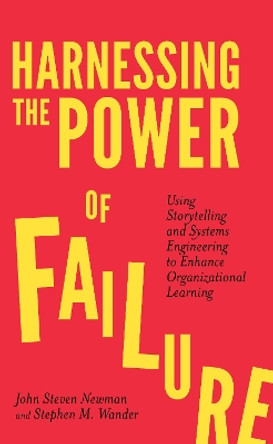Description
The authors employ the SFCS approach to explore a vast array of failure events in multiple sectors of transportation, industry, aerospace, construction, and critical infrastructure. They provide an Integrated Analysis seeking trends, patterns, and universally applicable insights that readers can use to recognize areas of potential vulnerability within their own activities. The authors then identify specific actions within the span of control of enterprise leaders, project managers, process owners and operators which can be implemented to manage risk in high consequence, high risk activities.
About the Author
JOHN STEVEN NEWMAN had a distinguished 42-year career with NASA, the FAA, and as an aerospace consultant. His experience base spans the Concorde SST, the Titan IV launch vehicle, the Space Shuttle, and the International Space Station. Dr. Newman served in diverse leadership roles spanning project management, flight test, safety, quality, risk management, environmental management, and accident and failure analysis.
STEPHEN M. WANDER has over 45 years of research and development experience in aerospace science and engineering, safety and mission assurance, energy, and environmental management. He has worked with NASA and the Energy Research and Development Administration (now the U.S. Department of Energy) and has served in the United States Air Force.
Reviews
Engineers retired from NASA and other US agencies, Newman and Wander present 18 case studies of system failures of various kinds that readers can use (any or all) as examples to demonstrate the analysis approaches and techniques they describe. They discuss recurrent themes-integrated analysis including frameworks and observations for enterprise/business management and engineering approaches, and another way of looking at the data. Then they recount some examples of organizations using failure to improve their safety and performance (or not), among them Navy SUBSAFE-learning from early failure, and Petrobras-had it and gave it away. Other sections present a roadmap to harnessing the power, and applying the power of failure. -- Annotation (c)2018 * (protoview.com) *
Harnessing the Power of Failure is well worth reading, especially if you share or may, sometime in the future, share responsibility for preventing failures with any product, project or system. The authors' many years of experience dealing with systems and analysis of failures is readily apparent. Clearly, the book focuses on complex systems such as those included in the Case Studies (Part II) which are fascinating and, frequently, tragic reading. These systems are not only complex but contain high risks and serious consequences if they fail. Book parts III, IV and V deal with failure causes, analysis of proximate and underlying issues and implementation of failure-prevention policies & procedures ranging from relatively simple to quite sophisticated. Almost any business organization can benefit from the teachings of this book since they share the common goal of preventing costly and/or tragic failures. However, some may not have the resources to implement the more sophisticated tools/systems presented in the book. Nevertheless, to do nothing is, clearly, management negligence. Harnessing the Power of Failure can be significant help for organizations to better understand their risks, consider consequences of potential failures and how to implement policies and procedures appropriate for their prevention. -- Rex Ritchie
Book Information
ISBN 9781787542020
Author John Steven Newman
Format Paperback
Page Count 248
Imprint Emerald Publishing Limited
Publisher Emerald Publishing Limited
Weight(grams) 366g
Dimensions(mm) 229mm * 152mm * 13mm







